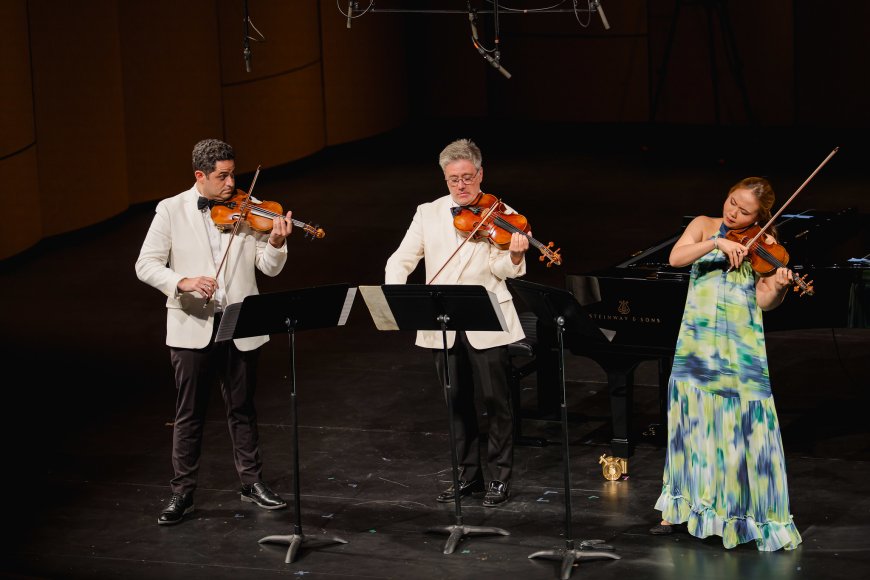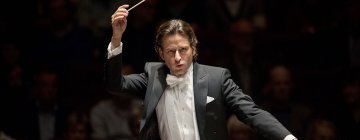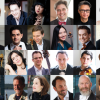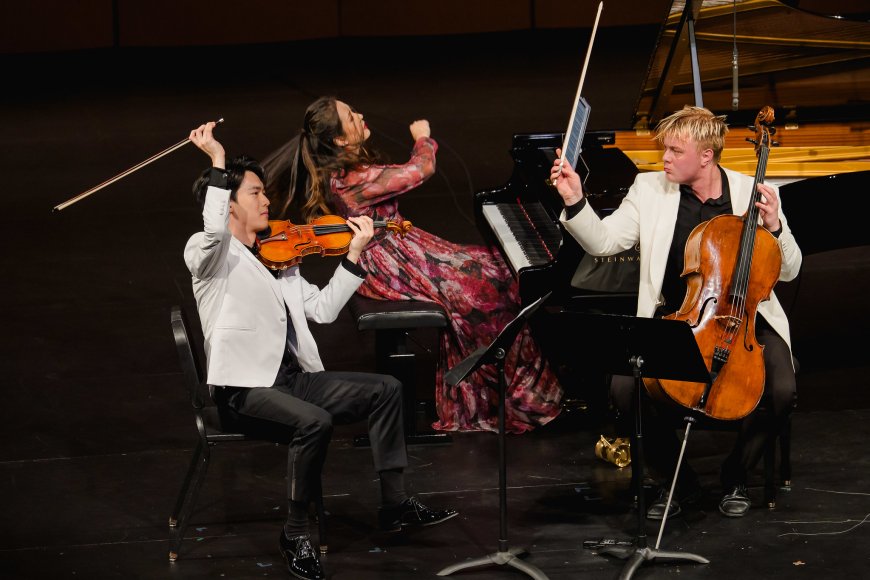
The Music@Menlo Chamber Music Festival has organized its mainstage concerts this year by the number of performers in each piece. This may seem an esoteric form of arrangement, but it does allow for interesting comparisons and contrasts.
Works with three players were showcased on July 20 in the Menlo School’s Spieker Center for the Arts. There were two trios for piano and violin and cello; one trio for clarinet, cello, and piano; and one trio for the unusual combination of two violins and viola. The performed works were composed between 1854 and 1902 by three Czech composers — Bedřich Smetana, Antonín Dvořák, and Josef Suk — and Johannes Brahms.
But the real story of this concert was not the repertoire. It was the performers. Sunday’s assorted musicians were a mix of Menlo veterans and younger stars, whose professional careers have gained momentum the past few years. Wu Han, the festival’s co-artistic director, noted this spread while introducing the concert. Everybody performed well, but it turned out that the evening belonged to the younger players.
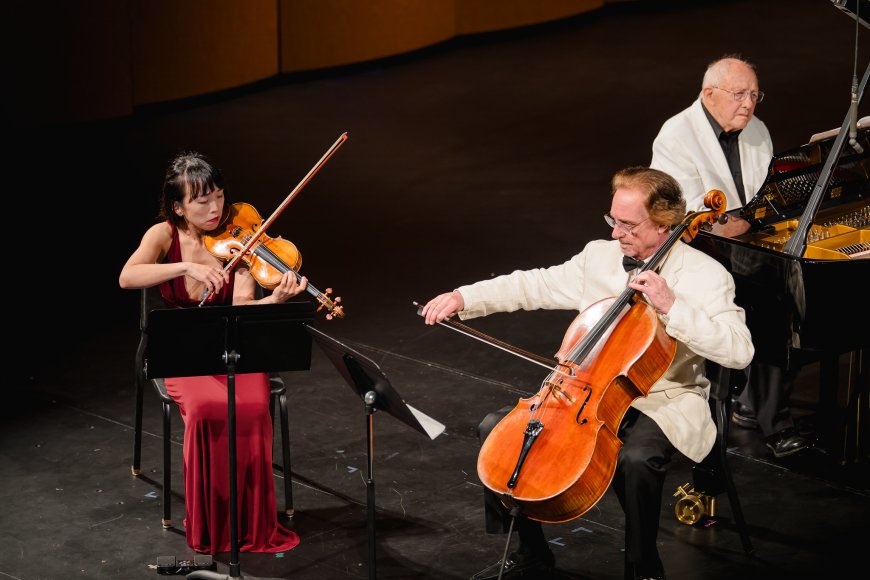
This verdict was shown vividly by Josef Suk’s brief Elegy for Piano Trio, Op. 23. Violinist Jessica Lee, one of the younger musicians, dominated the work with bold and declarative playing that outshone two of the storied veterans on the Menlo roster, cellist and co-artistic director David Finckel and pianist Gilbert Kalish (whose 90th birthday is being celebrated at a concert later in the festival).
Something similar, though less emphatically presented, happened in Brahms’s Clarinet Trio in A Minor, Op. 114. Relaxed and contemplative in this rendition, the work is built on dialogue and duets between the cello and clarinet. Jonathan Swensen, one of the newer players, gave tremendous expression on his cello, offering everything from agitated growls to heartbreaking melodic turns. Veteran clarinetist David Shifrin was much more restrained in exploring the potential variety of sounds from his versatile instrument. Nevertheless, Swensen and Shifrin made some lovely harmonies when playing together. Brahms’s piano, tackled here diligently by Shai Wosner, was largely limited to accompaniment and setting rhythms.

Bedřich Smetana’s Piano Trio in G Minor, Op. 15, was the only work performed entirely by younger players, and the potency of the execution made it the highlight of the concert. Violinist Richard Lin and pianist Chelsea Wang displayed as much robust drive, perhaps even more, as Swensen who made a second appearance on cello. Smetana composed more melodic material for the piano than Brahms or Suk did. Wang was able to make much of this, offering a variety of registers that went as far as Chopin-like delicacy in some of the light, softer passages.
Smetana’s opening Moderato assai is largely anguished and turbulent, expressing the composer’s grief at the death of his four-year-old daughter. It’s leavened by quieter sections, presented here with the same vehemence as the more dramatic parts. Despite that relatively high-energy base, rising crescendos were played with astonishing and exciting vigor. The middle movement scherzo is lighter in feel, while the Presto finale is as loud and fierce as the first movement, but these players gave it a totally different air: it was jolly fun to listen to, albeit continuously forceful.
The only work offering an even balance between the newer and older players was Dvořák’s Terzetto in C Major, Op. 74. Here, the younger Stella Chen on second violin joined veteran performers Arnaud Sussmann on first violin and Aaron Boyd on viola in such closely unified playing that the sound became a little box of distinct but matching tones, sometimes breaking apart at the score’s instruction but always coming together again. The outcome was as charming and winning a performance as this unusual piece could receive.
The preceding Prelude concert at Stent Family Hall, by the artists of the International Program, also consisted of trios. The young players gave crisp and urgently compelling performances of two Beethoven works, with full and hefty sound worthy of larger ensembles.
